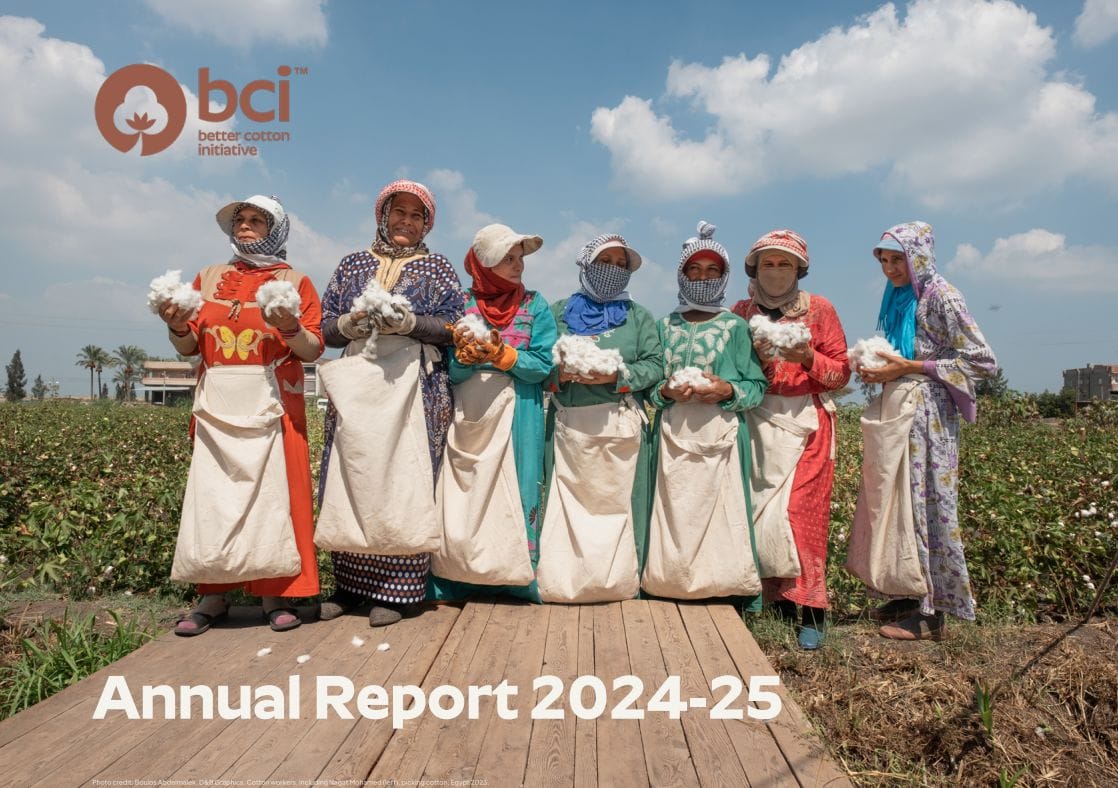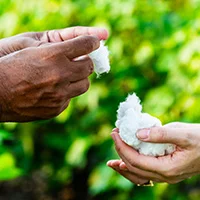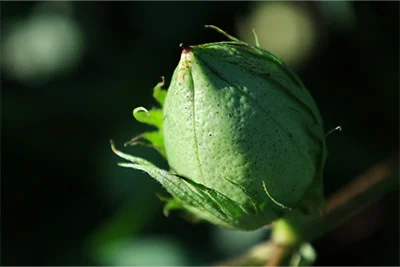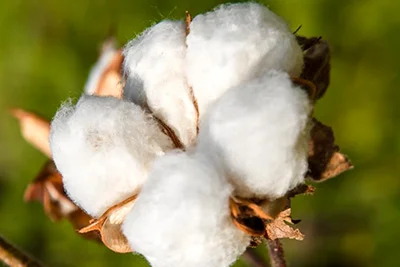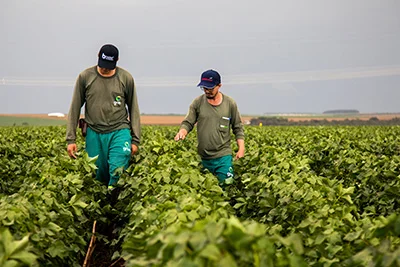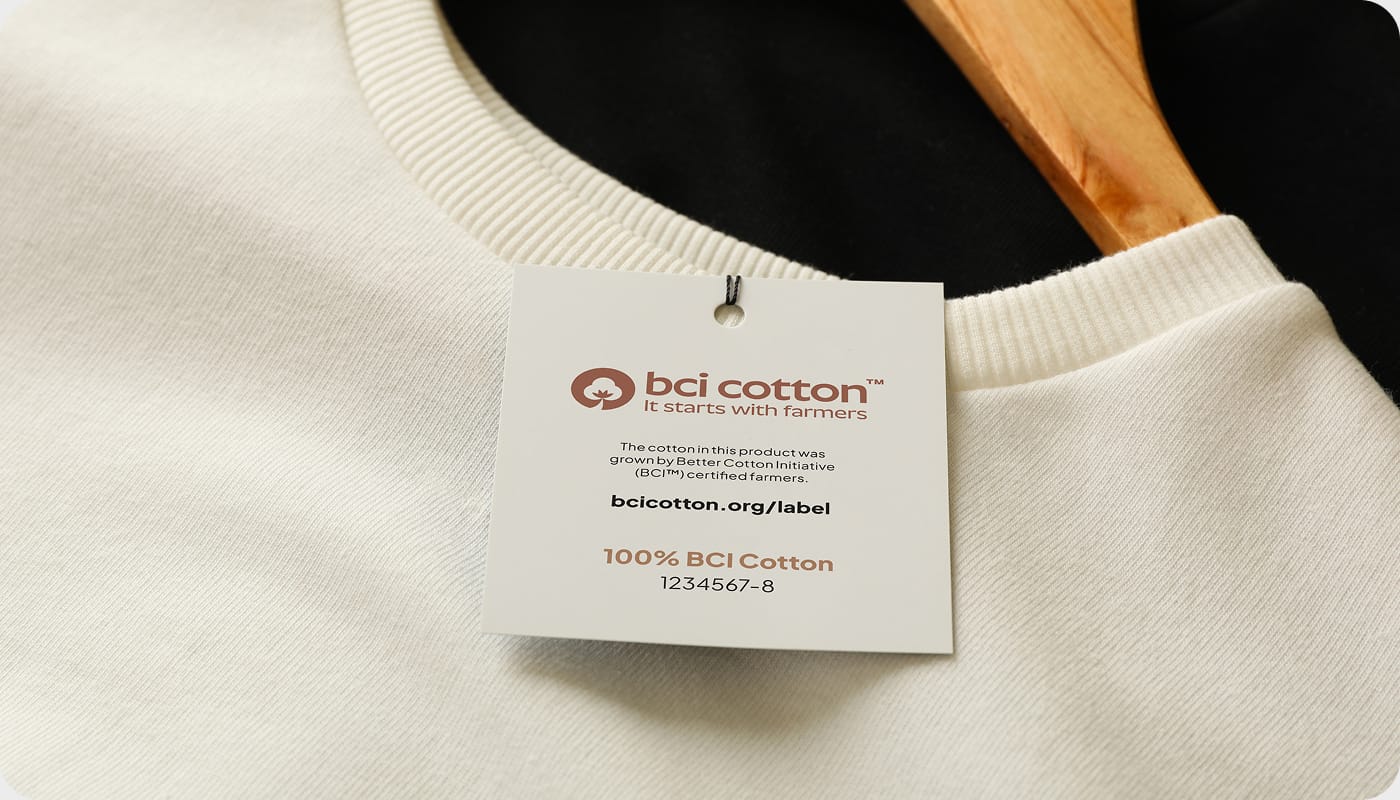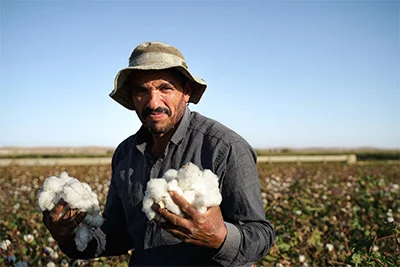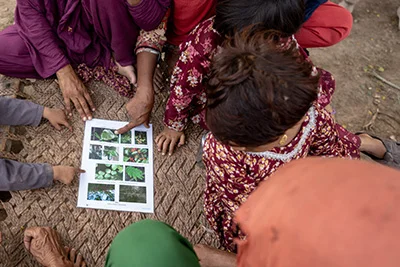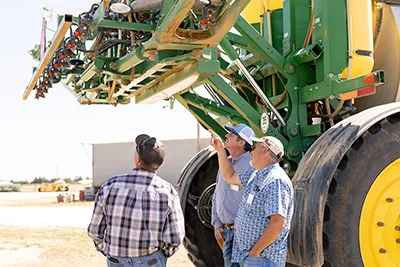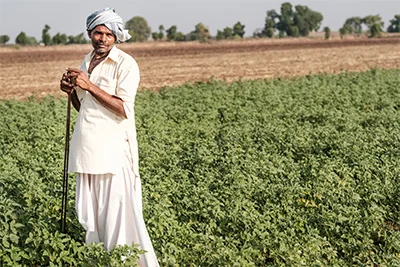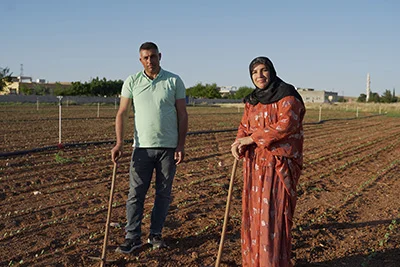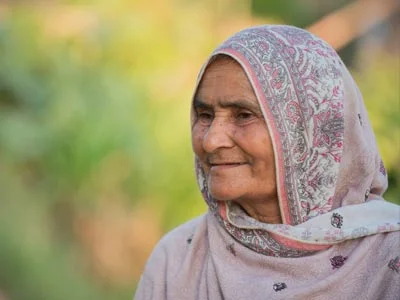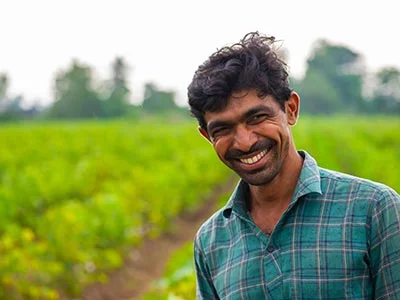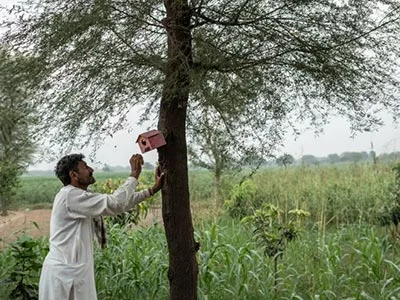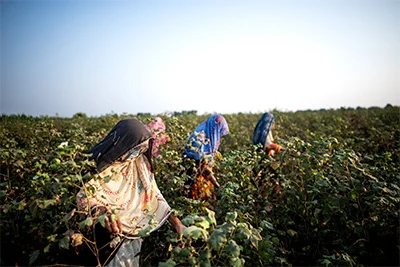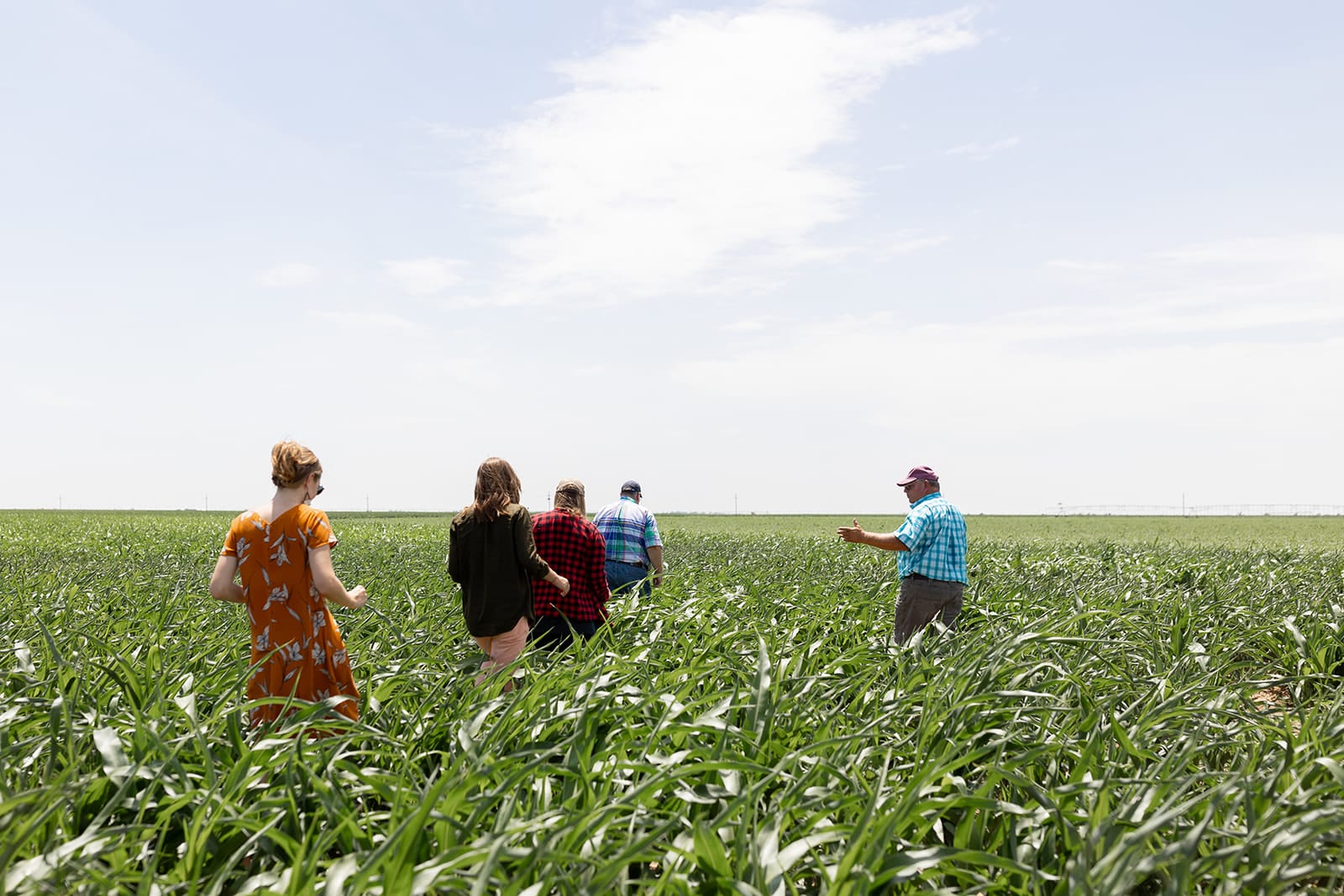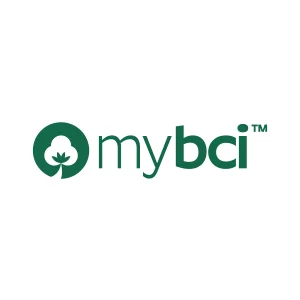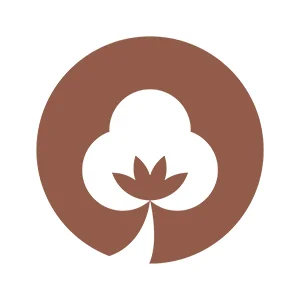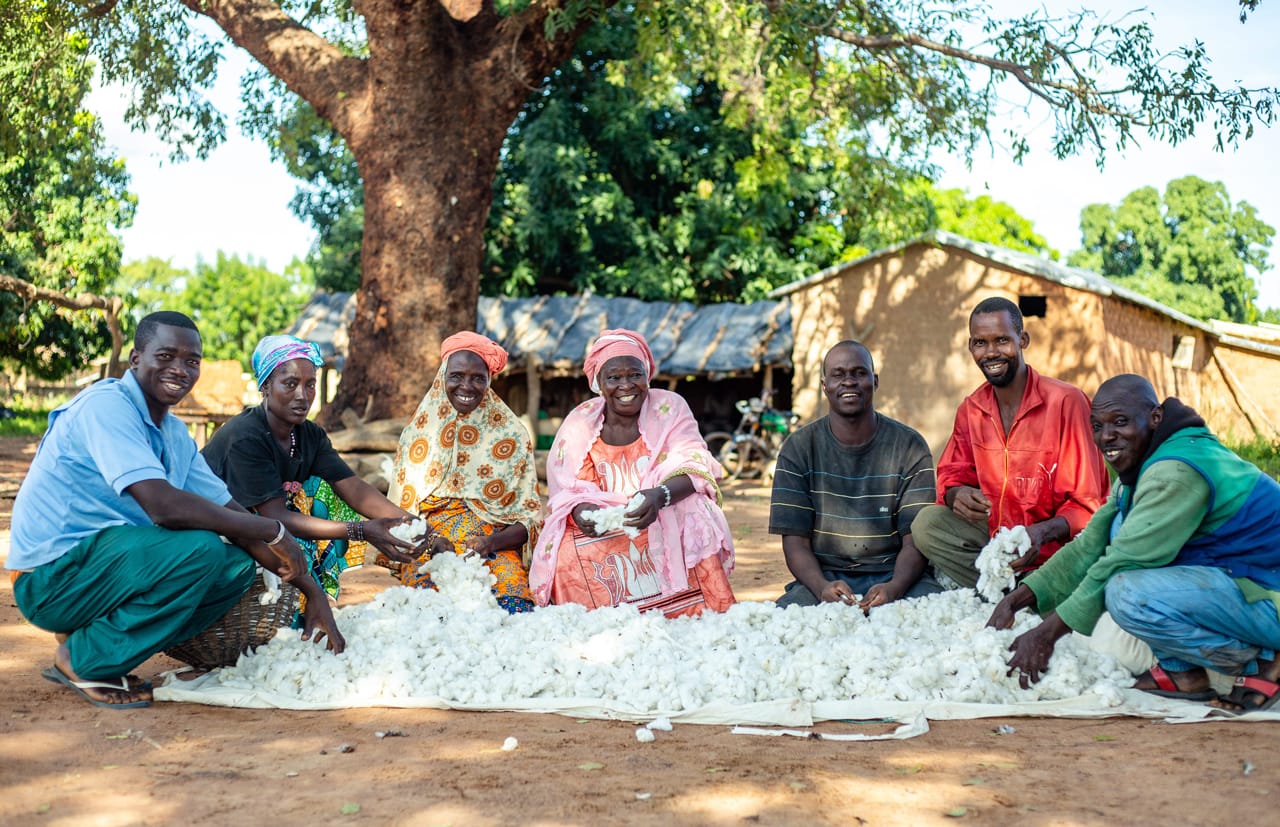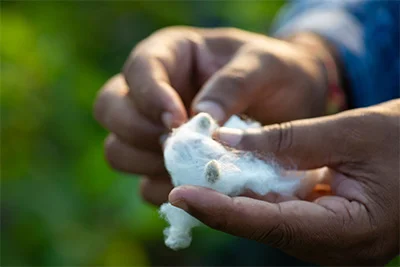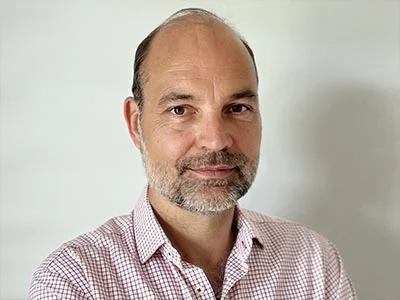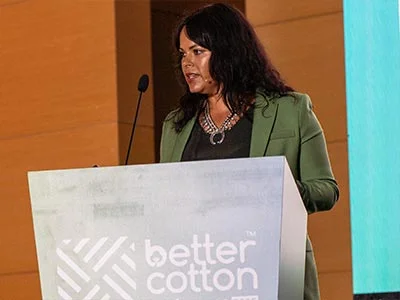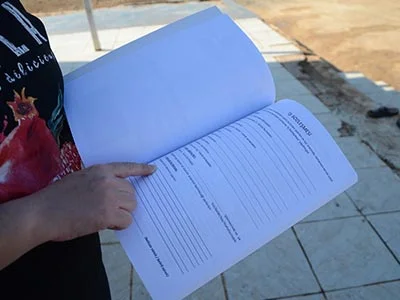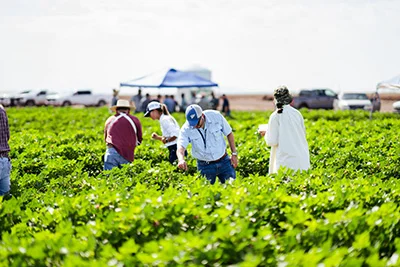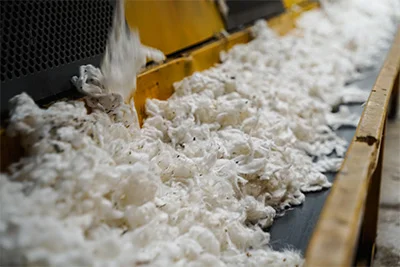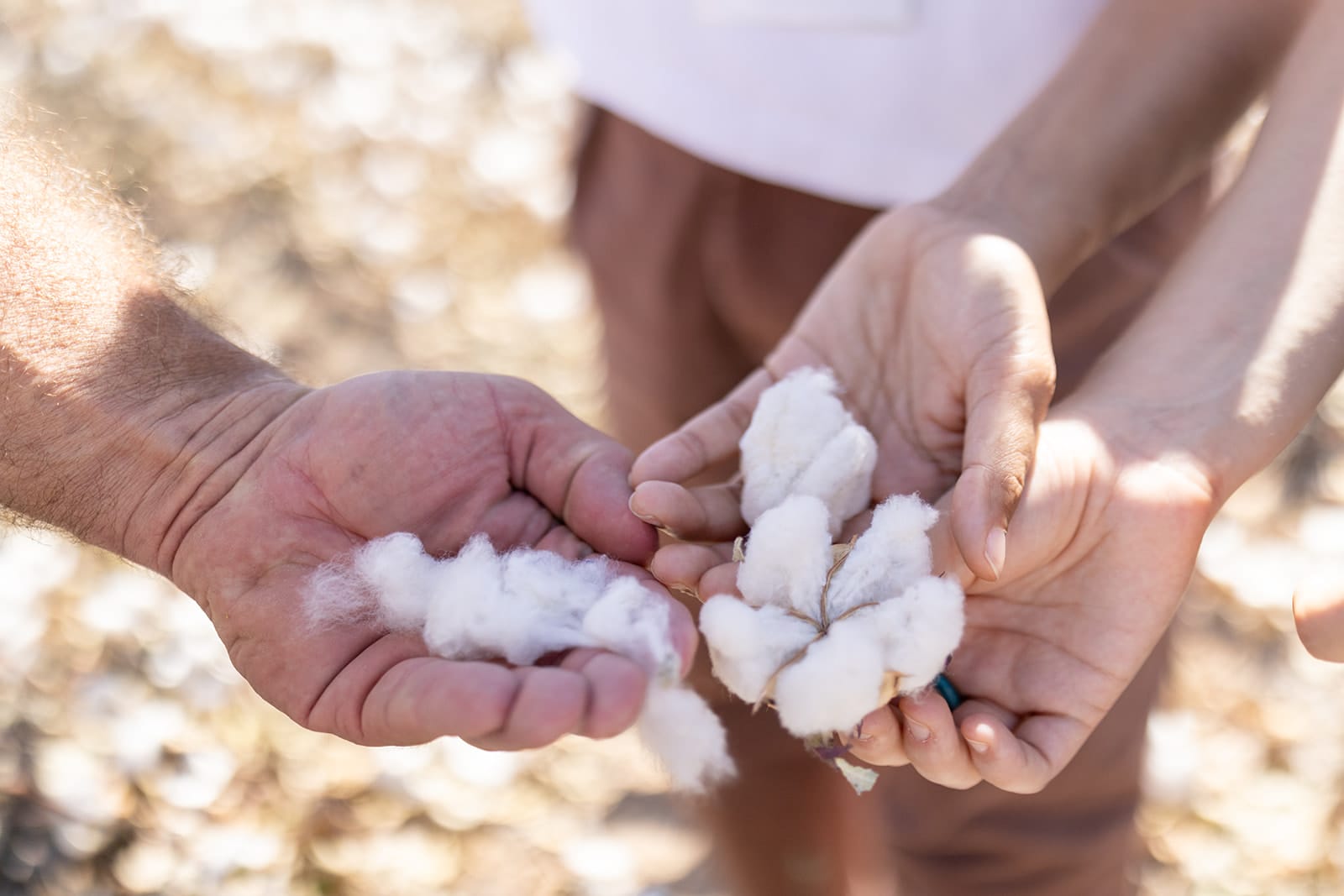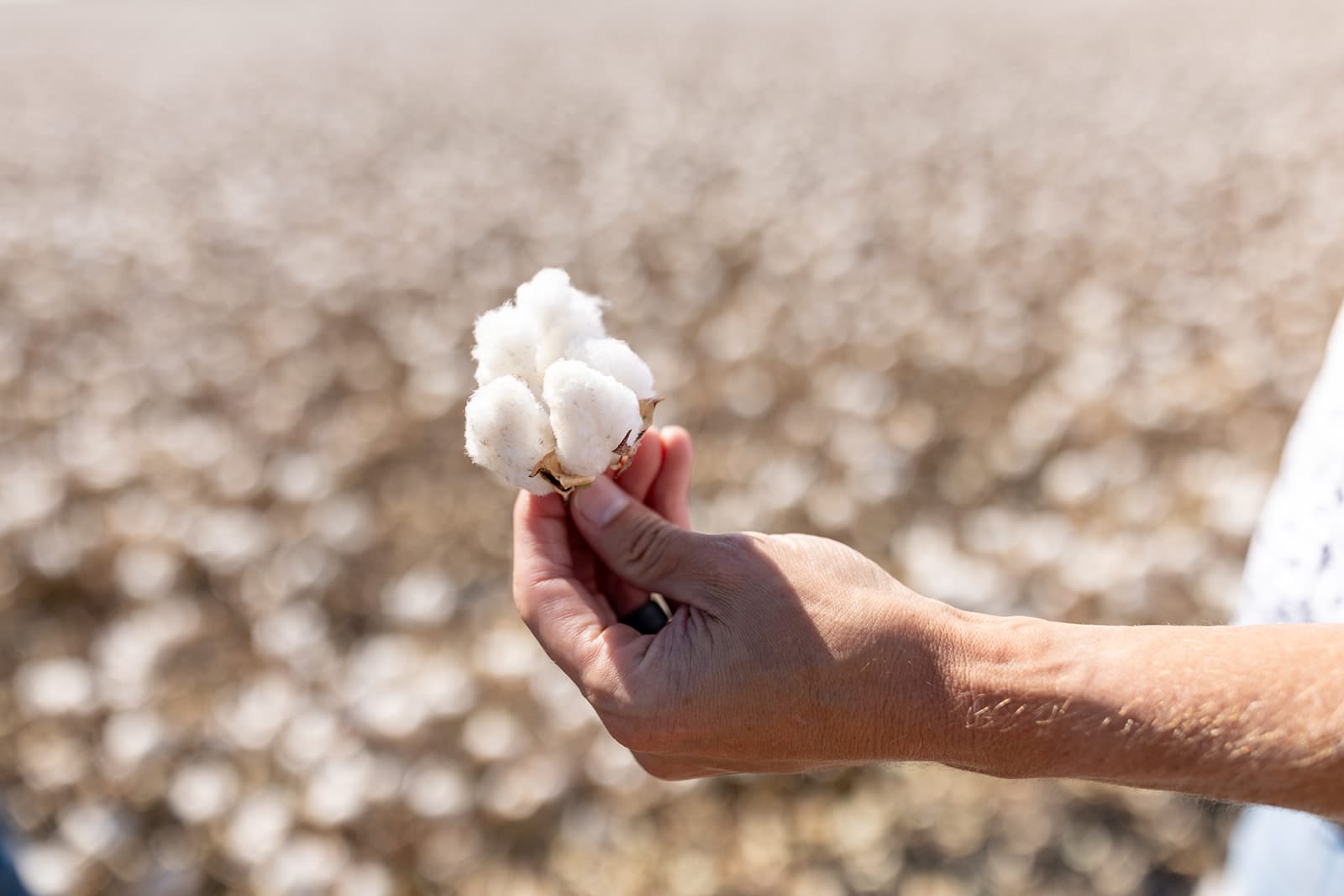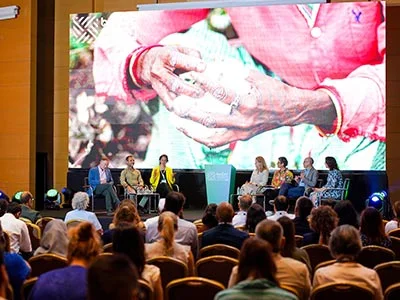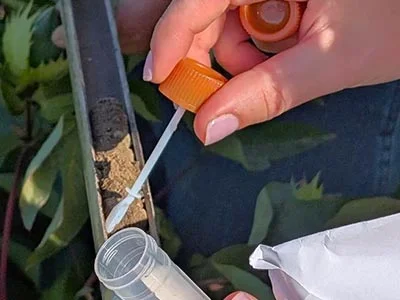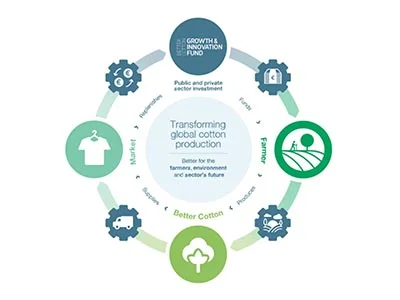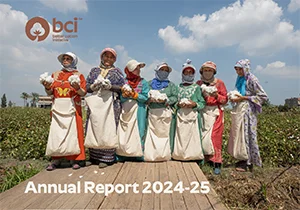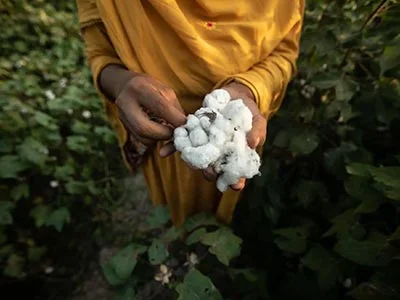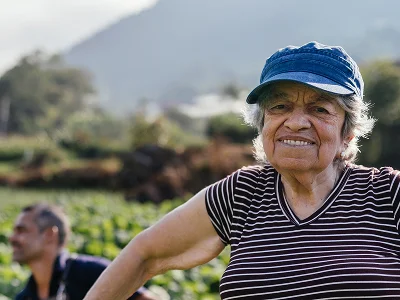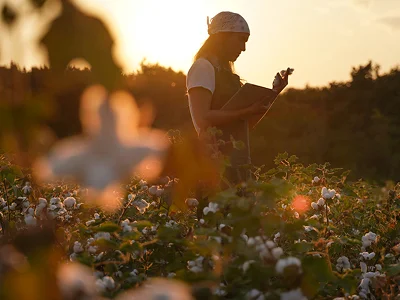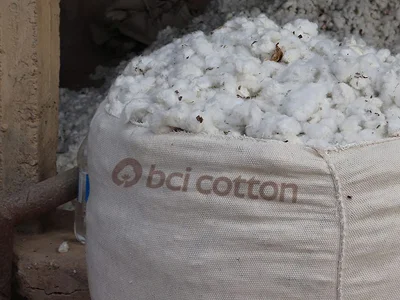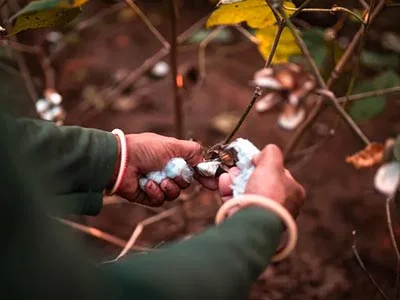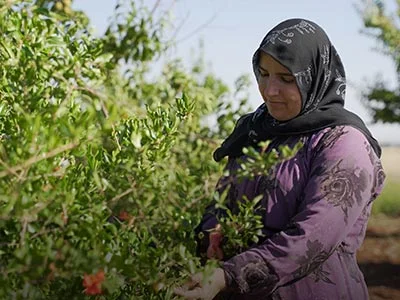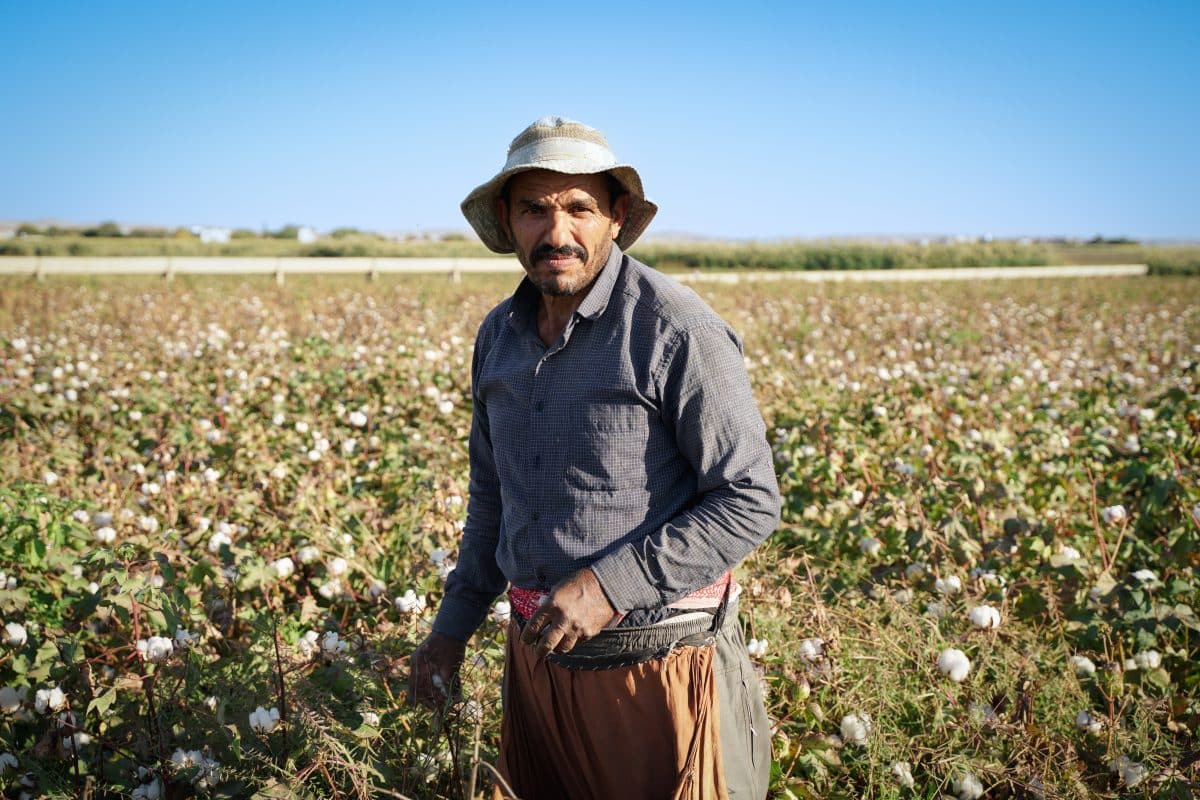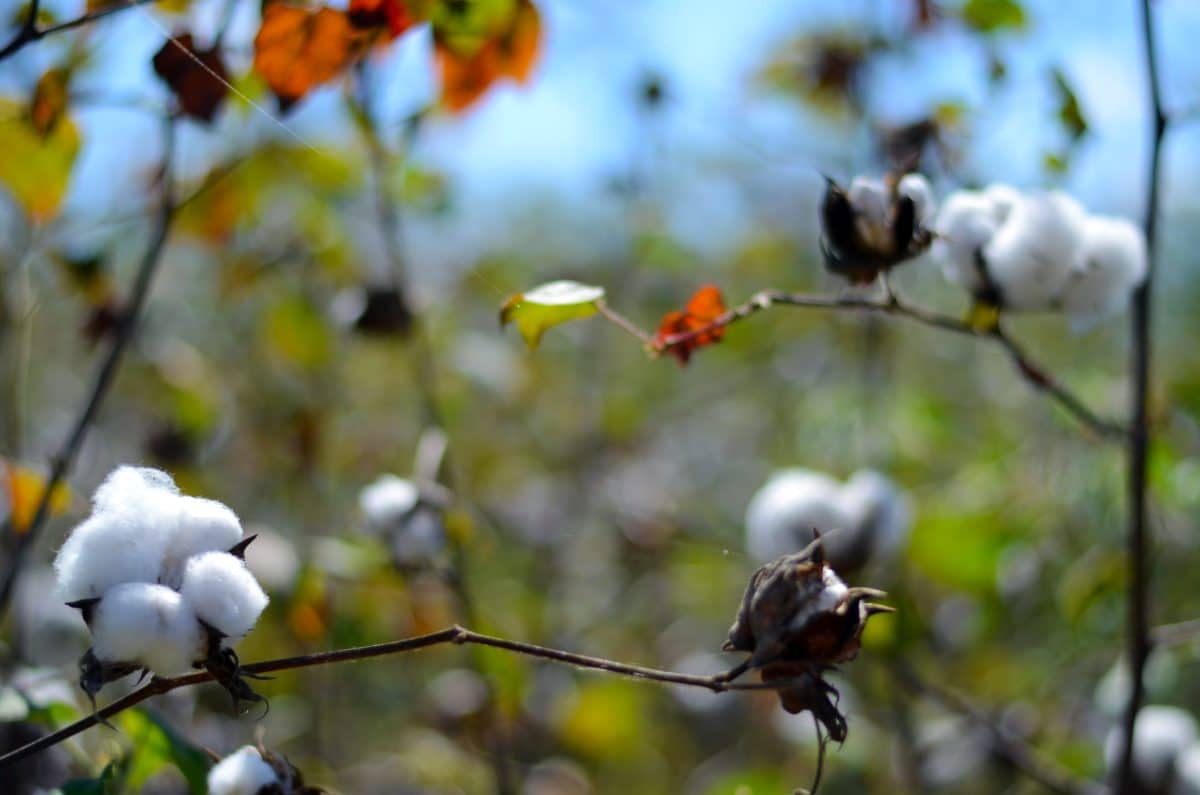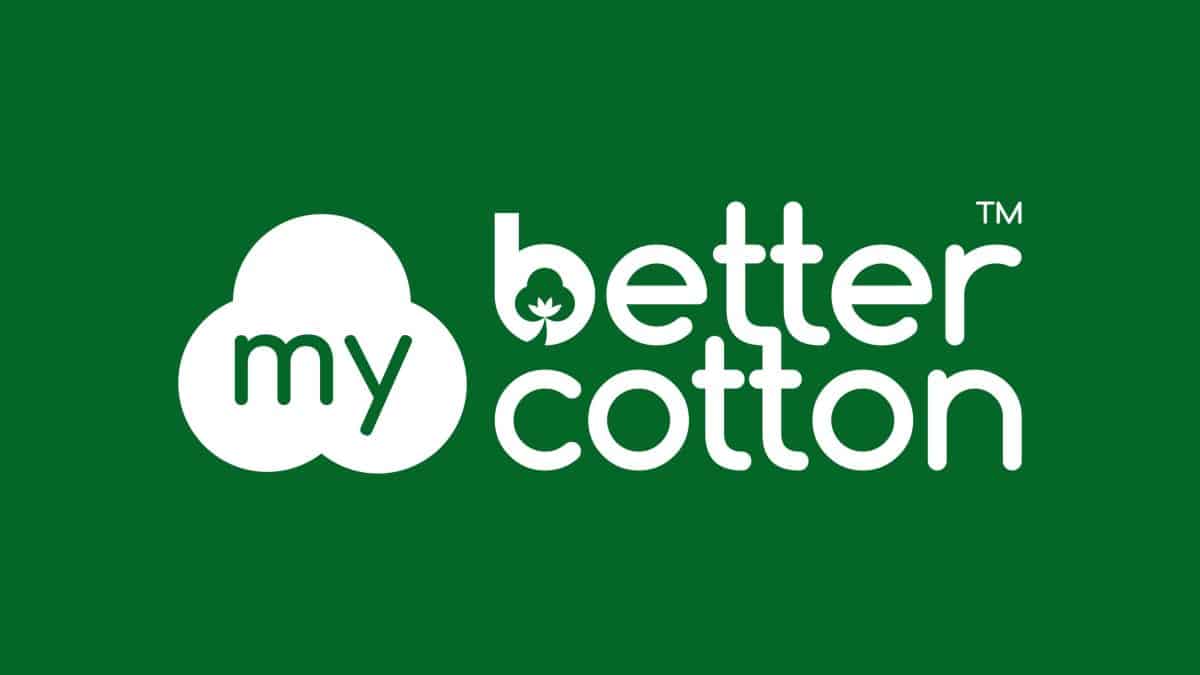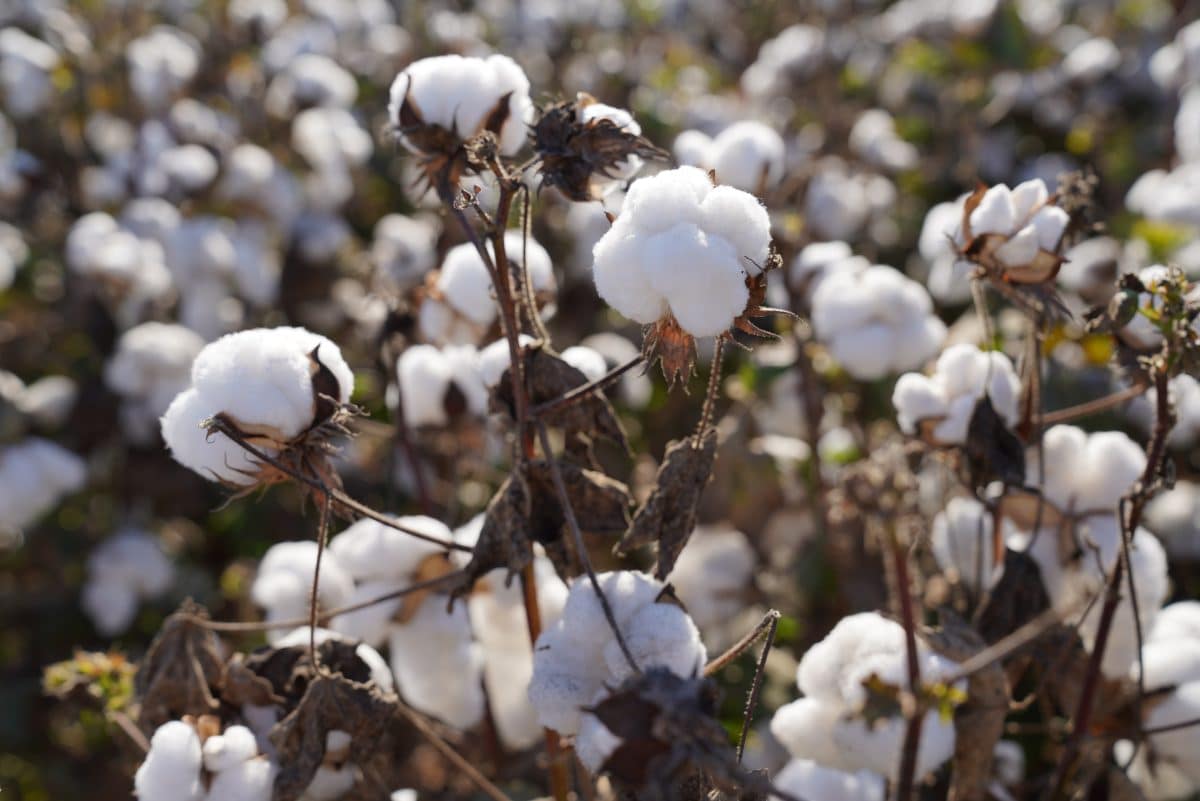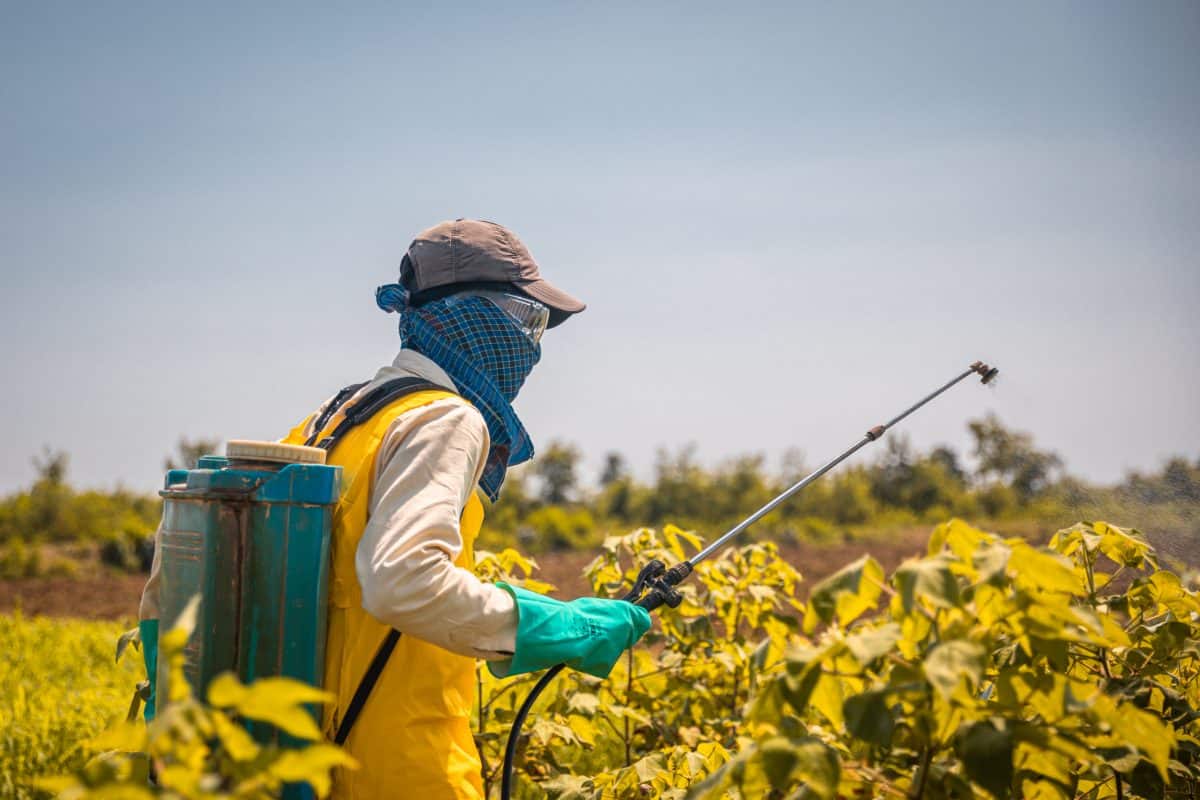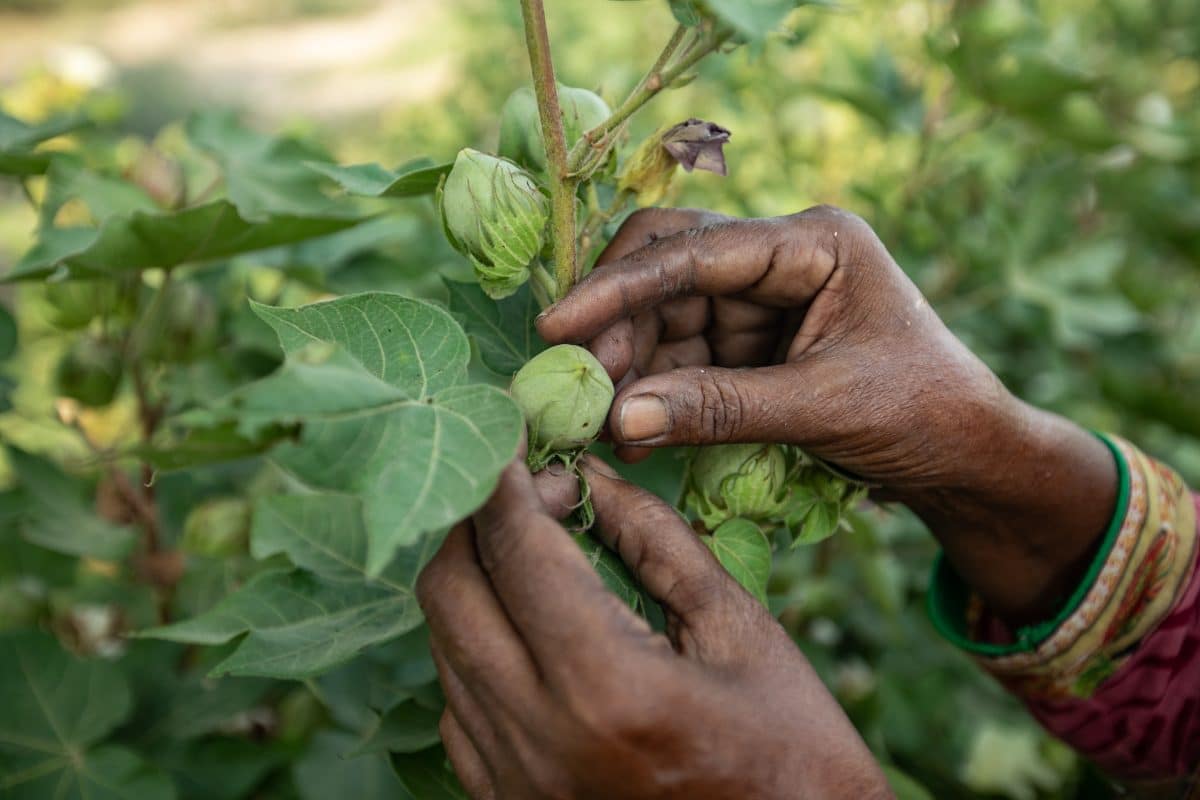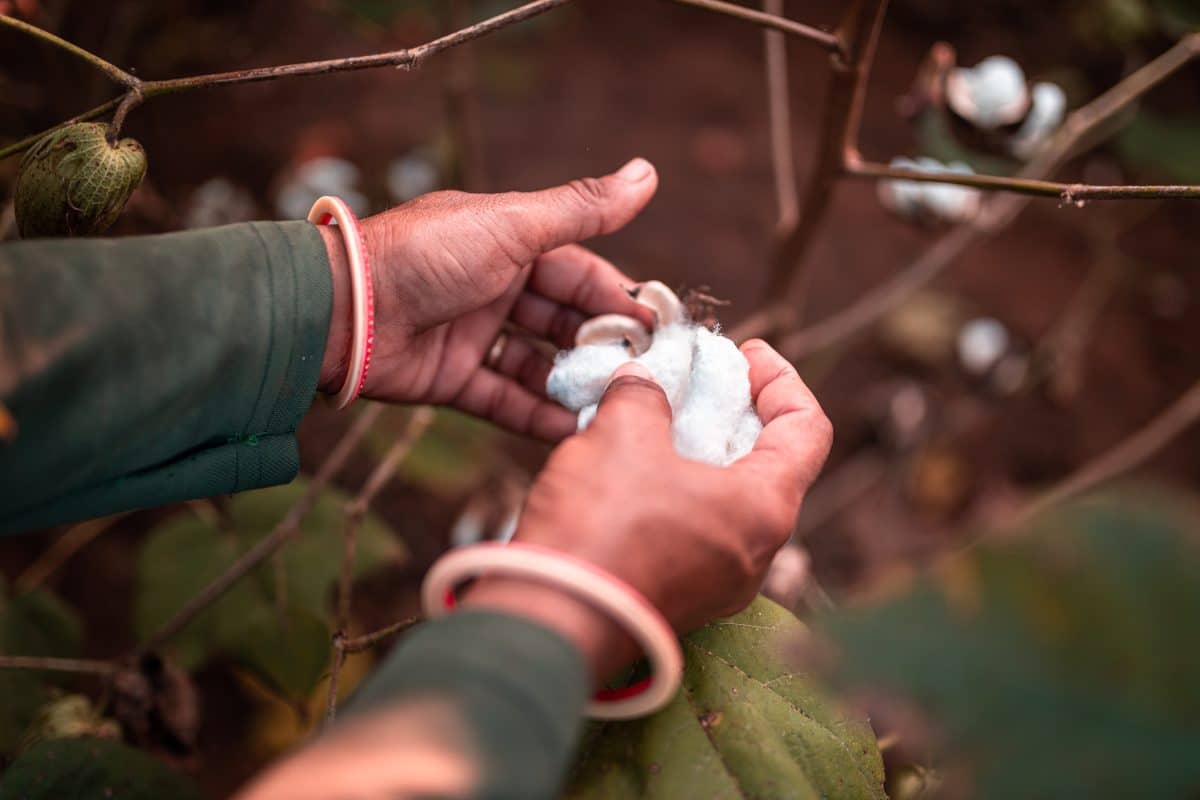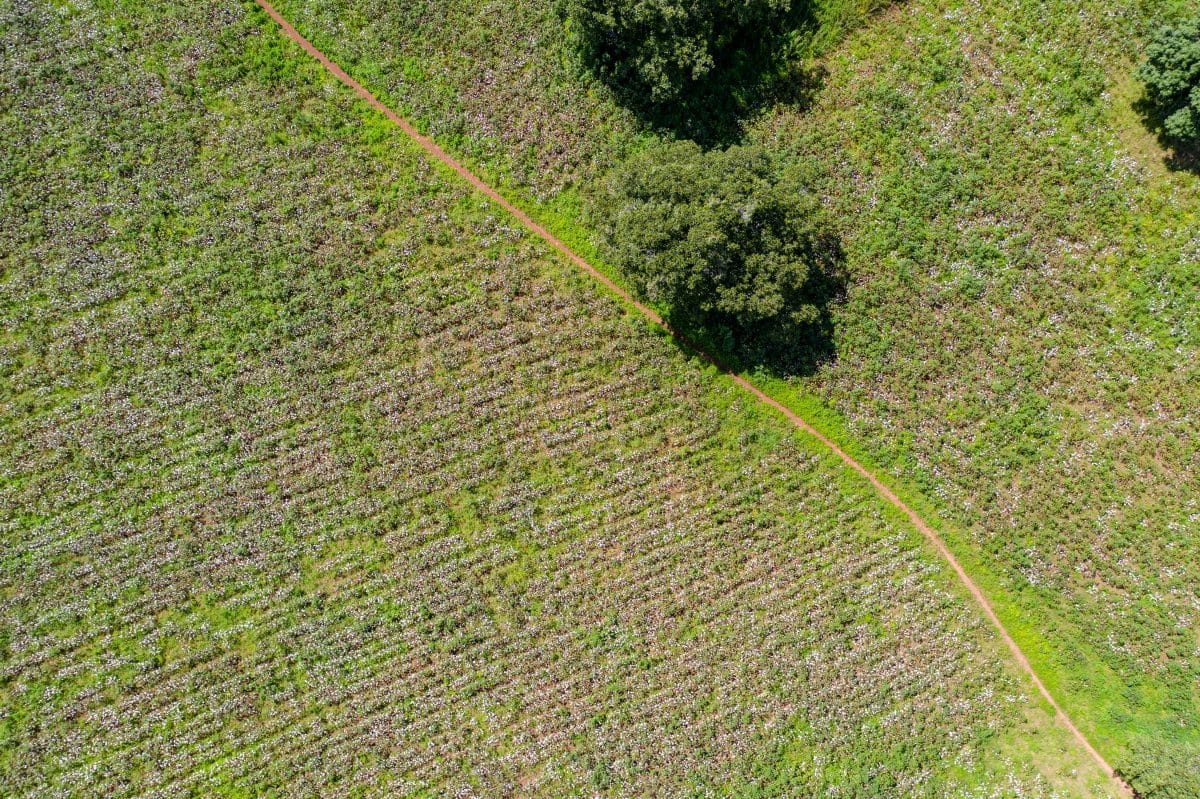Antonie Fountain, Managing Director of VOICE Network, Announced as Final Keynote Speaker for Better Cotton Conference 2023


Better Cotton today announces that Antonie Fountain, Co-Founder and Managing Director of the VOICE Network, will give a keynote speech introducing the theme of Livelihoods at the Better Cotton Conference 2023, taking place on 21 and 22 June in Amsterdam and online.


Antonie heads up the VOICE Network, a global association of civil society organisations working in sustainable cocoa. Tackling issues such as poverty, deforestation and child labour, the VOICE Network’s vision is a sustainable cocoa sector in which all stakeholders are able to earn a living income, under decent working conditions, where human rights are respected, and within a thriving and healthy environment.
A key spokesperson for civil society in cocoa, Antonie has been actively advocating a sustainable cocoa sector for almost two decades. He is the author of numerous publications on cocoa sustainability, and the chief editor of the Cocoa Barometer, a biennial overview of the sustainability challenges and opportunities in the cocoa sector.
Antonie is also the civil society advisor to the European Commission’s ‘Sustainable Cocoa Initiative’, the civil society representative to the United Nations’ International Cocoa Organisation Consultative Board, and sits on the Advisory Board of the Living Income Community of Practice.
Focusing on the incomes and well-being of smallholder farmers, Antonie will draw on his experiences in the cocoa sector to provide conference attendees with learnings that can be applied to a range of sectors, including cotton. He will explore key livelihoods challenges and discuss tried and tested approaches to finding solutions.
Livelihoods is one of four key themes at the Better Cotton Conference 2023, along with Climate Action, Regenerative Agriculture, and Data and Traceability. These four themes reflect key priorities from Better Cotton’s 2030 Strategy, and each will be introduced by a keynote speech from an internationally recognised sector thought leader.
We have previously announced the three other keynote speakers for the Better Cotton Conference 2023. Nisha Onta, Regional Coordinator for Asia at WOCAN, will open the conference with a speech introducing the theme of Climate Action, Maxine Bédat, Director of New Standard Institute, will introduce Data and Traceability, and Felipe Villela, Co-Founder of reNature, will give a keynote on the theme of Regenerative Agriculture.
Thank you to all our Better Cotton Conference sponsors! If you are interested in exploring our sponsorship packages, please contact [email protected]
To find out more about the Better Cotton Conference 2023 and sign up for tickets, head to this link. For more information, please contact [email protected]
Read more‘Assess and Address’: Better Cotton’s Revised Approach on Decent Work
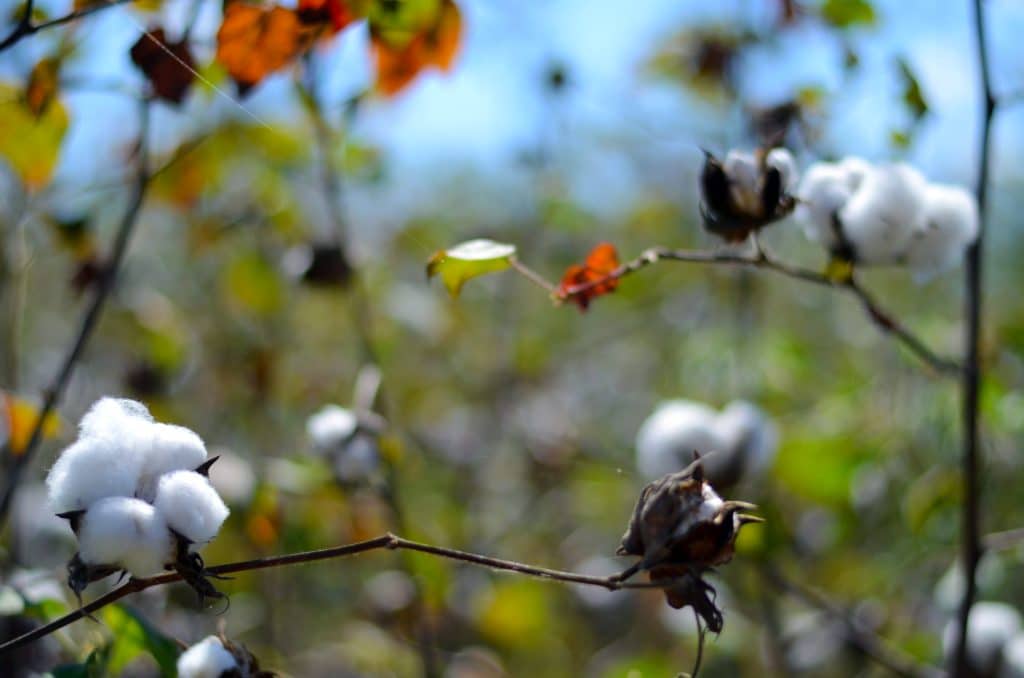



By Amanda Noakes, Senior Global Decent Work and Human Rights Coordinator at Better Cotton
Underpinning everything we do at Better Cotton is the recognition that Better Cotton is only ‘better’ if it improves the wellbeing of farmers and their communities. That’s why ‘Decent Work’ – productive work that offers social protection, equal opportunities, freedom, security and human dignity – is a central focus of our programme, and the most substantially strengthened principle in our newly revised farm-level standard.
‘Assess and Address’ Criteria in Better Cotton’s New Decent Work Principle
Highlighting the importance of this area for Better Cotton and its growing recognition in the wider legislative landscape, our updated criteria on Decent Work reflects our ambitious new goals to drive even more positive change for farming households, workers and communities. Within the framework of our new Decent Work principle, we are transitioning away from a traditional zero-tolerance model – adopted by many certifications worldwide – and towards an ‘assess and address’ approach, which treats producers and farming communities as partners in improving practices and protection systems.
The ‘assess and address’ framework developed and rolled out by Rainforest Alliance, in particular, has served as a key reference for Better Cotton. At its core, ‘assess and address’ moves away from cut-and-run, punitive measures for certificate-holders who are not in compliance with criteria, which has historically eroded trust among stakeholders and driven key issues like child labour underground.
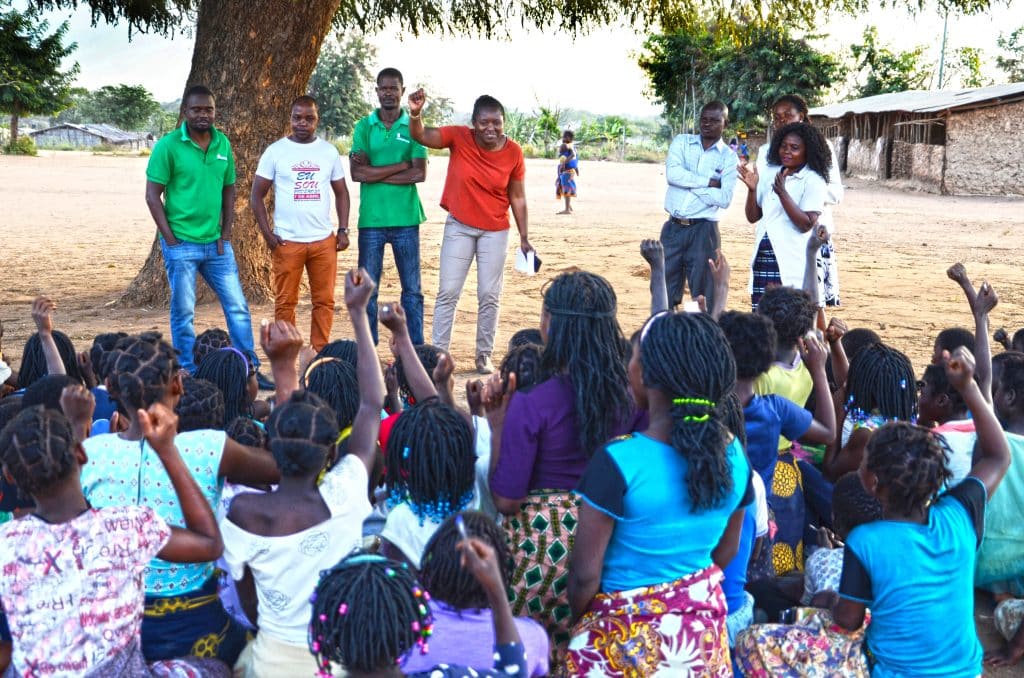

Instead, it aims to work together with producers and communities to tackle the root causes of human and labour rights challenges, holistically and collaboratively. It also puts a greater emphasis on supporting and investing in field-level systems and stakeholder collaboration to prevent, mitigate, identify and address issues, so that responsibility and accountability are locally owned and shared. In a nutshell, the approach aims to support better identification and mitigation of risks, as well as improved case management capabilities. It will also bring greater farm-level emphasis on prevention and protection, driven by genuine commitment, communication and continuous monitoring.
Better Cotton’s revised Principles and Criteria (P&C), coming into effect in 2024, have the most comprehensive and nuanced set of labour indicators yet. One of the primary new indicators that has embodied the ‘assess and address’ approach is a requirement on participatory development and roll-out of effective labour monitoring and grievance handling systems at producer level. This will include the establishment of clear referral and remediation procedures in case of identification of rights violations.
In addition to this, greater emphasis on building rights awareness of farm workers, but also producers (smallholders in particular), in our revised Standard is also a key step forward.
The Potential Challenges and Limitations of ‘Assess and Address’
At Better Cotton, we recognise that the ‘assess and address’ approach is still relatively new, and as with any new approach, will need to be further tested and refined over the coming years. It is also an approach that will increasingly demand support from our valued members and partners, through field-level investment and expansion of knowledge partnerships with expert organisations specialising in human rights.
We hope to work together with our members, partners and other key stakeholders to test innovative systems and approaches to some of the most endemic and persistent challenges in the cotton sector today. Multi-stakeholder dialogue around sourcing, pricing, supply chain and purchasing practices all also have a critical role to play in moving the sector in a more equitable direction. As human rights due diligence legislation continues to evolve globally, such initiatives will be fundamental to ensure our common vision of more sustainable and responsible supply chains is met. We invite all to join us on this journey.
Read moreBetter Cotton Announces myBetterCotton, New Member Portal Launching in 2023
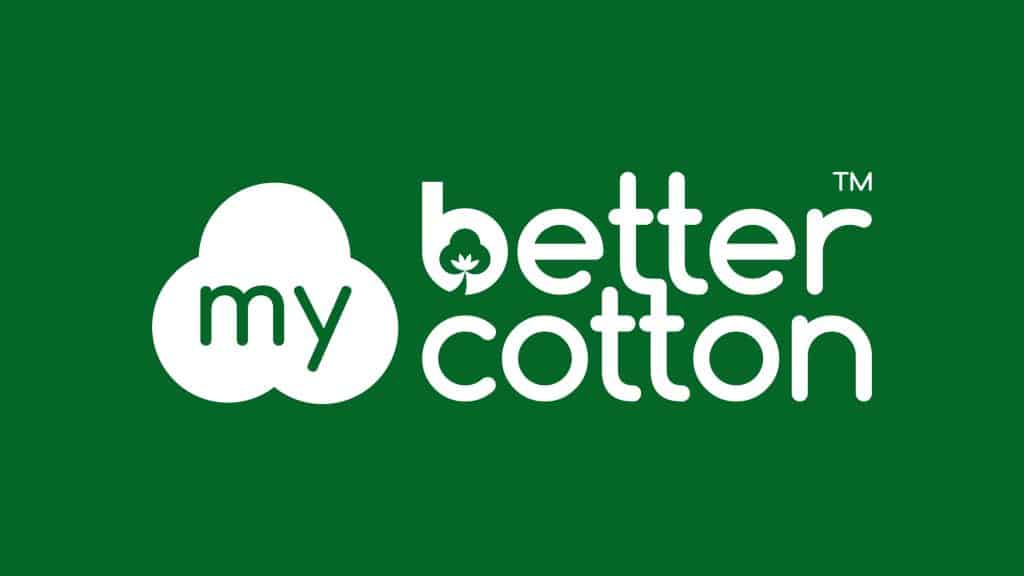

Better Cotton today announces that it will be launching myBetterCotton, a new portal for Better Cotton Members, later this year. Access to the portal will be granted to Members in a phased rollout, starting mid-2023 and continuing throughout the rest of the year.
The myBetterCotton portal has been created in order to improve the Better Cotton membership experience, taking into account the responses from our 2022 Member Feedback Survey. The new portal will provide a platform for Members to connect, collaborate and network, whilst making it easier for them to engage with Better Cotton.
The myBetterCotton portal is built around four key areas:
- ‘My Membership’ – empowering Members to take control of their organisation’s information and keep it updated, this section will map out the onboarding process and allow Members to review and manage open or pending actions.
- ‘My Community’ – a space for Members to engage, collaborate and network online. Direct chat and discussion group features will offer Members the opportunity to share opinions, discuss news and talk about their successes and challenges with one another. Members will also be able to view events and webinars and register to attend.
- ‘My Sourcing’ – where Retailer and Brand Members can explore sourcing guidance, submit their cotton consumption and review their goals, and keep up to date with their progress towards meeting targets.
- ‘My Claims’ – allowing Members to explore claims guidance and facilitate submissions of marketing and communications materials for review. Members will be able to review any claims they submitted previously.
myBetterCotton is our new and exciting meeting place for Members to network and learn more about Better Cotton. Our vision is that it will help newcomers to Better Cotton blossom into seasoned Members who promote Better Cotton and believe in our mission to improve farmer livelihoods and the environment. We will share regular updates and moderate your insightful discussions and look forward to welcoming you online over the course of 2023.
Members will receive more information about myBetterCotton, including when they can expect to receive access to the portal, by email in the coming months.
Read moreIntroducing the Better Cotton Chain of Custody Standard: Register for Upcoming Webinar
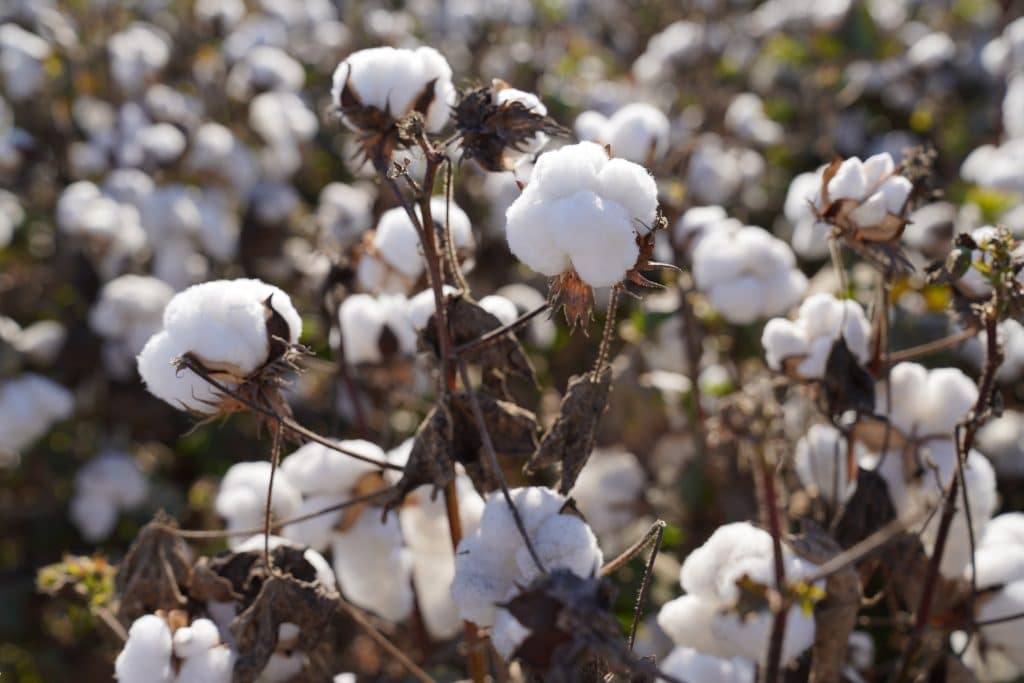

Better Cotton is today announcing that on 10 May we will host a webinar to celebrate our next step towards making tracing physical Better Cotton a reality. On that date, we will publish a revised version of the Better Cotton Chain of Custody Guidelines, renamed as the Chain of Custody Standard.
As defined by ISEAL, a chain of custody is the ‘custodial sequence that occurs as ownership or control of the material supply is transferred from one custodian to another in the supply chain’. From the farmers who grow Better Cotton to the companies that source it, the Better Cotton Chain of Custody (CoC) is the documentation and evidence of Better Cotton as it moves through the supply chain.
Up until now, our CoC Guidelines allowed two chain of custody models: product segregation between the farm and gin, and mass balance beyond the gin (read more about these models here). The new CoC Standard will continue to offer this combination, but also introduce the opportunity to implement physical chain of custody models across the whole supply chain. This will make it possible for our Members to source physical Better Cotton alongside mass balance.
Better Cotton has been revising its Chain of Custody Guidelines, the key framework which connects demand with the supply of Better Cotton, since July 2021. As part of the revision of the Guidelines, an extensive research and consultation process has taken place, involving Better Cotton stakeholder groups as well as external experts in the field. This included surveying over 1,500 Better Cotton suppliers, commissioning two independent research studies, convening an industry task force with Member Suppliers and Retailers and Brands, and multiple stakeholder workshops.
The revision was incentivised by the increased demand for tracing physical Better Cotton, which requires the introduction of physical chain of custody models alongside mass balance. The new CoC Standard will introduce physical segregation and controlled blending as additional chain of custody models, creating the opportunity for our members to trace physical Better Cotton whilst also continuing to use the mass balance model.
The Chain of Custody Standard v 1.0 will be introduced by a webinar to provide further information on key updates and changes to the previous CoC Guidelines. The webinar will be hosted on 10 May 2023 and take place in two sessions to accommodate different time zones. The CoC Standard document will be published on the same date on our website.
To find out more, we encourage all Better Cotton Members and stakeholders to register for the webinar on 10 May using one of the following links*:
• Session 1: 08:00 – 09:00 (UTC+1) Registration link
• Session 2: 15:00 – 16:00 (UTC+1) Registration link
*Please note that both sessions include the same content, so there is no need to attend both.
Read moreBetter Cotton Impact Targets: Q&A with Rajan Bhopal, International Project Manager at Pesticide Action Network UK


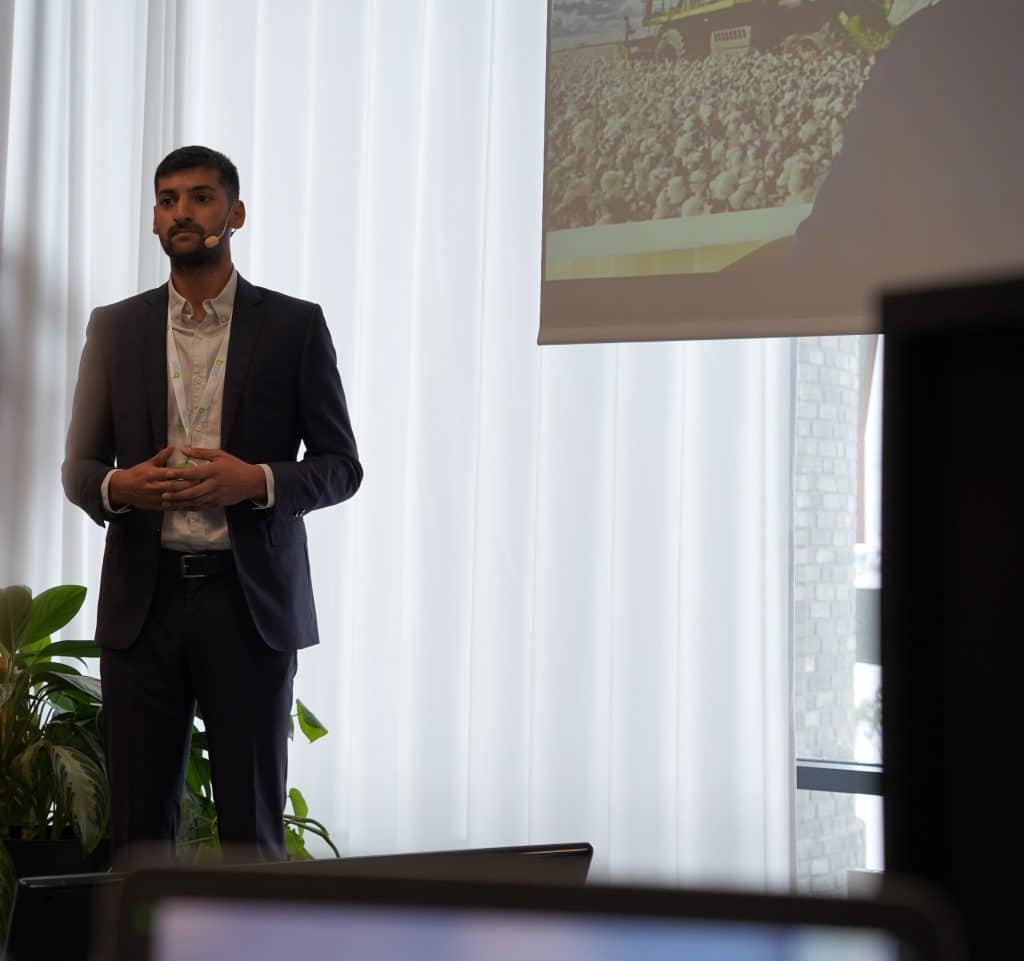

Better Cotton’s new 2030 Impact Targets have been informed by consultations with both internal and external experts to help us get to the heart of each matter and accelerate progress at the field level.
To better understand the cotton sector’s relationship with pesticides, and why important changes are required, we spoke with Rajan Bhopal, International Project Manager at Pesticide Action Network (PAN) UK.
Better Cotton has partners around the world. How important will the extensive nature of this network be to improving the cotton sector’s use of pesticides across key regions?
Globally we have already exceeded the planetary boundary for chemical pollution, each kilogram of pesticide sprayed only adds further to the global ecological crisis. The Better Cotton mission of improving the sustainability of all cotton farming worldwide has led to the organisation operating in countries where cotton is not grown sustainably. This is where Better Cotton can support farmers to adopt cotton production practices that promote biodiversity and healthy, sustainable livelihoods, and have real impact on reducing the harms of pesticides.
A global effort is needed to transition towards responsible forms of pest management and reduce the harms that pesticide use can cause. The apparel and textile sector needs to move together with cotton producers by providing strong demand and funding research, development and training where required. As a member of Better Cotton, we hope to support this global network, which provides opportunities to share practices and approaches within countries and across regions.
Across the cotton sector, how aware are farmers of the environmental and human risks linked to poor pesticide management and how big of an endeavour is providing education and training at scale?
Smallholder farmers and workers suffer symptoms ranging from chemical burns to migraines, nausea and vomiting from pesticide exposure and so are acutely aware of the immediate impacts on their own health – though they are usually unaware of the long-term health implications of pesticide exposure. However, most farmers do not believe they have a choice.
Farmers we speak to can both lack knowledge or confidence in alternative pest management approaches. This is why capacity strengthening, research and on-farm demonstrations of responsible pest management is needed urgently.
Increasing awareness of harms is not the only challenge. To promote responsible practices, the sector needs to work with farmers and researchers to trial and test alternatives, to establish the demonstration of proven alternatives in fields that are easily accessible to all farmers and increase the value we assign to the tens of thousands of vital extension agents who provide critical advice and support to farmers.
For cotton farmers, what will be the most notable benefits of reducing or more efficiently using pesticides?
Reduced costs, improved health and ecosystem resilience. Half of all farmers and workers are affected by pesticide poisoning every year. This can be stopped by eliminating Highly Hazardous Pesticides and reducing pesticide use through agroecological methods, leading to healthy communities and a safe working environment. For many farmers, production costs can be reduced – sometimes massively. In our work with smallholder farmers those who implement agroecological cotton production reduce cost by 70% without reducing their yield, leading to huge improvements in profit. From smallholdings to megafarms, a reduction in the use of pesticides will directly improve the health of the agroecosystem, which provides natural control of cotton pests.
With the current rate of climate change, how important is it that cotton farmers adopt best practices on pesticide use in a timely manner?
Pesticides are driving climate change directly and are likely to account for between 7-10% of Better Cotton’s greenhouse gas emissions. Most synthetic pesticides are made from fossil fuels and are very energy intensive to produce – on average it takes 10 times more energy to produce a kilogram of pesticide than the same amount of nitrogen fertiliser due to the greater quantities of fertiliser applied.
With climate change, pests are becoming harder to control, and pests may emerge in new areas. Farmers who are dependent on pesticides will find costs increasing as they battle pests without the help of beneficial organisms or other integrated pest management tools. Farmers depending on a single annual crop for cash income will have limited resilience in the face of extreme weather events as high production costs increase vulnerability to heavy economic losses in a low yielding year.
Globally, more pest control is provided by nature than by pesticides. Farming with nature, not against it through adopting best practice will help farmers to reduce pesticide use and improve their resilience to the extreme conditions brought by climate change.
To find out more about Better Cotton’s Impact Targets, follow this link.
Read moreFelipe Villela, Founder of reNature, Announced as a Keynote Speaker for Better Cotton Conference 2023


Better Cotton today announces that Felipe Villela, Co-Founder of reNature, will give a keynote speech introducing the theme of Regenerative Agriculture at the Better Cotton Conference 2023, taking place in Amsterdam and online on 21 and 22 June.


A regenerative agribusiness entrepreneur with over a decade of experience in the sector, Felipe founded reNature in 2018 with his business partner Marco de Boer. reNature is a Dutch organisation that utilises regenerative agriculture to fight today’s most pressing challenges, including climate change, poverty, biodiversity loss, and food insecurity. Its mission is to regenerate 100 million hectares of farming land by 2035, whilst supporting 10 million farmers in this transition, representing 2% of total farmland & farmers across the globe.
reNature delivers technical assistance, monitoring and evaluation, and stakeholder engagement to farmers’ cooperatives, private companies and NGOs seeking a transition towards regenerative agriculture at scale. Its goal is to ensure access to high-quality and healthy food for the growing global population while regenerating land.
Born in Brazil, Felipe is also Strategic Advisor at the United Nations Food Systems Summit (UNFSS) and a Lead Author at the UN Environment Programme’s Global Environment Outlook for Business, contributing to Brief 3 on the role of business in transforming our food systems. A TEDx speaker, he was featured in Forbes Under 30 in 2020, and sits on the Regenerative Advisory Board of Mãe Terra. Felipe is passionate about spreading the knowledge and efficiency of regenerative agriculture within businesses, in order to foster a new nature-inclusive economical model.
Regenerative agriculture, a term which refers to practices that promote soil health and restore organic carbon in soil, is one of four key themes at the Better Cotton Conference 2023, along with Climate Action, Livelihoods, and Data and Traceability. These four themes all reflect key priorities from Better Cotton’s 2030 Strategy, and each will be introduced by a keynote speech from an internationally recognised sector expert.
We have already announced that Nisha Onta, Regional Coordinator for Asia at WOCAN, will open the conference with a keynote speech introducing the theme of Climate Action, whilst Maxine Bédat, Director of New Standard Institute, will introduce Data and Traceability. Our final keynote speaker, as well as further details on the conference themes and sessions, will be announced in the coming weeks and months.
To find out more about the Better Cotton Conference 2023 and sign up for tickets, head to this link. For more information, please contact [email protected]
Read moreBetter Cotton Updates Field-Level Principles and Criteria
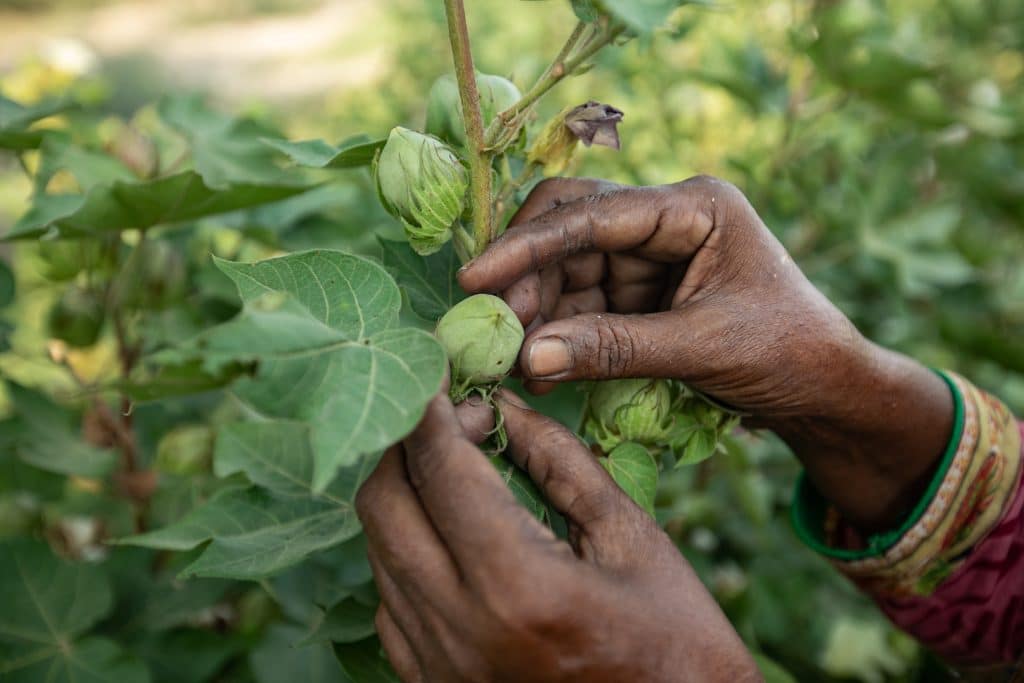

Better Cotton has revised its Principles & Criteria (P&C) to ensure it remains an effective tool to drive continuous improvement and deliver sustainability impact at field-level.
The P&C define the organisation’s approach to more sustainable cotton production and establish the requirements farmers must comply with to attain a licence and sell their cotton as ‘Better Cotton’. At present, more than two million farmers worldwide – from large to smallholder operations – hold a licence.
The revised Principles cover Management, Natural Resources, Crop Protection, Fibre Quality, Decent Work, and Smallholder Livelihoods, as well as the two cross-cutting priorities of Gender Equality and Climate Change.
The latest revision was finalised in February following extensive consultations to ensure it best reflects the organisation’s latest focus areas, including its 2030 Strategy, whilst aligning with global trends towards more sustainable agricultural value chains and market regulations. Refined in compliance with the codes of good practice from ISEAL, a leading authority on sustainability standards, Version 3.0 (v.3.0) will become effective for licensing starting in the 2024/25 season.
In practice, the revised P&C will embrace a farmer-centric approach and serve as a more locally relevant standard that addresses the environmental, social and economic matters most pertinent to cotton production today. It has been reframed to plug key gaps and remove duplicative requirements, learning from previous iterations and the experiences of users.
To accelerate environmental improvements, P&C revisions will ensure the responsible use, conservation and enhancement of natural resources by championing regenerative agricultural practices, more sustainable crop protection methods and effective water use.
From a social standpoint, the revised standard will place stronger onus on driving impact and promoting wellbeing in farming communities, supported by more robust requirements surrounding Decent Work and Gender Equality, in addition to the inclusion of a new principle: Smallholder Livelihoods.
What’s more, a new subsection on climate change will offer guidance for farmers on how to best to adapt to field-level challenges and highlight the best available, region-specific measures.
After an 18-month review process, we’re confident that the revised principles will help cotton growing communities continue to deliver improvements at field-level. With a practice-oriented focus, our standard strengthens requirements across both environmental and social topics, and even goes further to encompass farmer livelihoods for the first time. We’re grateful to the many stakeholders that supported this latest revision, it’s with their support that we can ensure the P&C is effective across our industry.
I experienced the review process of the Decent Work & Gender working group as a highly participatory and constructive process with ample space to include insights and experiences from different kinds of stakeholders. This has led to revised principles that are not only clear, related to the context and practical but also in line with international standards and principles. As such, they will be a great support to cotton growers to identify and address labour and gender issues and improve working conditions and livelihood of the people involved in cotton production in a sustainable way.
To learn more about the Principles and Criteria v.3.0 and read the new farm-level standard, head to this link.
Read moreBetter Cotton Trials Innovative Traceability Solutions in India
Digital and physical traceability solutions from Retraced, TextileGenesis, Haelixa, and Tailorlux are currently being tested to determine the best way to establish greater transparency across cotton supply chains
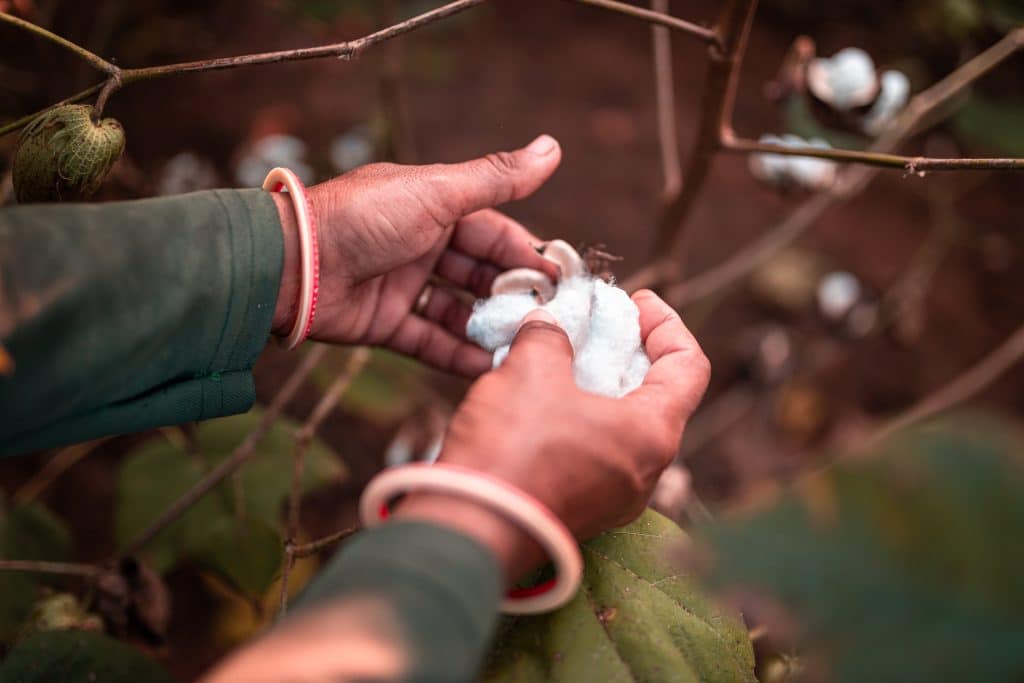

Better Cotton is piloting innovative traceability technologies from Retraced, TextileGenesis, Haelixa and Tailorlux within India’s cotton supply chains to determine the best way to boost transparency across cotton supply chains.
Conducted in collaboration with companies including C&A, Marks & Spencer, Target, and Walmart, the project will see each technology track cotton as it moves throughout the supplier networks of participating brands and retailers.
This will build on Better Cotton’s ongoing work to revise its Chain of Custody (CoC) model and revolutionise traceability across complex cotton supply chains. In practice, it will help establish greater visibility of the journey cotton takes from field to fashion and provide an opportunity to test advanced solutions ahead of Better Cotton offering traceability at a limited scale this year.
Both digital and physical traceability solutions are being deployed in discrete cotton supply chains to assess their performance, with the results set to inform the scaled direction of Better Cotton’s traceability programme. Digital traceability is being provided by leading platforms, Retraced and TextileGenesis. Better Cotton is also trialling two additive tracers, Haelixa and Tailorlux, before determining the potential of each solution.
There are over one million Better Cotton farmers in India, and it is one of the largest producers of Better Cotton globally. However, domestic supply chains are amongst the most complex in the world and are far more fragmented than in other regions. Until now, it has been difficult to get a holistic view of traceability in the supply chain. Better Cotton’s new traceability system will need to align and eventually go beyond the capabilities of existing traceability solutions to provide full end-to-end visibility.
With physical traceability, Better Cotton will be able to verify the provenance of certified materials with greater accuracy. This pilot programme will expand upon Better Cotton’s Chain of Custody framework that incorporates the concept of “mass balance” – a widely-used volume-tracking system. Mass balance allows Better Cotton to be substituted or mixed with conventional cotton by traders or spinners along the supply chain while ensuring that the amount of Better Cotton sold never exceeds the amount of Better Cotton produced. The new traceability framework will allow greater flexibility and visibility of the physical flow of cotton through supply chains as our network grows.
After consulting with our members across the supply chain and getting to grips with their needs and pain points, we’ve taken those learnings and tested solutions in India to bring traceable Better Cotton to life. What we’ve found is helping us to prepare to offer a scalable new system to our members as early as this year. Not only will this benefit our members, but it will benefit farmers who implement sustainable agricultural practices by ensuring they can continue to access increasingly regulated markets.
At M&S, we source 100% of the cotton for our clothing from more responsible sources, however, across the industry the global supply chain remains particularly complex. Since 2021, we have been proud partners working with Better Cotton to improve cotton farming globally. We’re delighted to be building on our partnership and trialling innovative new traceability solutions in India’s cotton supply chains, in order to revolutionise the wider industry.
Better Cotton’s India traceability pilot activities are supported in part by the Verité STREAMS project, a traceability project funded by the U.S. Department of Labor under cooperative agreement number IL-35805.
Read moreMaxine Bédat, Director of New Standard Institute, Announced as Keynote Speaker for Better Cotton Conference 2023




Better Cotton today announces that Maxine Bédat, Founder and Director of New Standard Institute (NSI), will give a keynote speech on the theme of Traceability and Data at the Better Cotton Conference 2023, taking place in Amsterdam on 21 and 22 June.
New Standard Institute is a think-and-do tank using data to drive accountability in the fashion industry. The non-profit organisation fosters collaboration between citizens and leading researchers to ensure that the fashion industry is more sustainable, ethical, and equitable. Maxine has been a driving force behind the Fashion Act, a ground-breaking piece of regulation which NSI is working to get passed in New York, aiming to hold companies in the fashion sector accountable by introducing mandatory social and environmental due diligence.
Maxine is the author of the book, UNRAVELED: The Life and Death of a Garment, a Financial Times Book of the Year. Prior to NSI, she co-founded and was the CEO of Zady, a fashion brand and lifestyle destination creating a transparent and sustainable future for the apparel industry. She has also been recognised by Fast Company in its Most Creative in Business, Business of Fashion’s BoF 500, the definitive index of people shaping the global fashion industry, and Oprah’s Super Soul 100, for leaders elevating humanity.
As the industry turns from commitment to action, data and traceability will be central. I’m looking forward to joining the Better Cotton Conference to come together, share, align and get energised for the critical work ahead.
Traceability and Data is one of the Better Cotton Conference 2023’s four key themes, along with Climate Action, Livelihoods, and Regenerative Agriculture. Each of these themes, which highlight key priorities from Better Cotton’s 2030 Strategy and for the cotton sector at large, will be introduced by a keynote speech from an internationally recognised thought leader.
We recently announced that Nisha Onta, Regional Coordinator for Asia at WOCAN, will open the conference with a keynote speech introducing the theme of Climate Action. The two remaining keynote speakers, as well as further details on the conference themes and sessions, will be announced in the coming weeks and months.
To find out more about the Better Cotton Conference 2023 and sign up for tickets, head to this link. For more information, please contact [email protected]
Read moreTo Move the Needle We Need to Measure Sustainability Impact, Not Just Tick Boxes


By Alan McClay, CEO, Better Cotton.
This article was first published by Reuters on 4 April 2023.
Sustainability is no longer the sideshow of mainstream business, to be wheeled out by the chief executive at conferences and then sent off back to the side lines. A company’s social and environmental performance is today a central concern of consumers, investors and regulators.
The latest evidence of the subject’s increasing profile is the European Commission’s recent approval of a strict set of new rules governing how companies disclose their activities in this space.
In the regulatory pipeline for several years, the Corporate Sustainability Reporting Directive presents some clarity on what is – and what is not – appropriate with regard to the methodologies underpinning corporate claims. This is hugely welcome.
The timing of this new legislation is by no means coincidental. Consumer interest and investor pressure are pushing companies to brandish their sustainability credentials more than ever before. With the commercial stakes so high, the temptation to massage the message is intense.
From false claims by automakers over air pollutants to the use of misleading environment data by clothing brands, accusations of “greenwash” are intensifying by the day.
Market dynamics aside, however, the ability to confidently compute a company’s overall sustainability performance is still by no means assured. Modern corporations are vast entities, often with global footprints that stretch from far-off farms and factories through to shoppers at the local corner store.
Fortunately, a data revolution is under way. Automated data collection and storage, Big Data analysis, machine learning: these and other digital tools are placing a wealth of information at companies’ disposal.
For years, the struggle for businesses was to lay their hands on the data demanded of them. Today, companies are awash with facts and figures about non-financial issues. Now, the question is about what data to prioritise, how best to use it, and – above all – what it really tells us.
This last point is crucial. Every protocol for reporting performance data carries with it the priorities and proclivities of its creators. Some approaches are geared towards avoiding risks (environmental pollution, high carbon emissions, etc); others adopt a lens of opportunity (investments in low-carbon technologies, talent development, etc).
The overall picture is complex, yet one crucial dividing line runs through almost every reporting methodology – namely, the emphasis (or not) placed on the higher-level effects of a given intervention, its impact, in other words.
As an organisation, Better Cotton’s focus is on improving the lot of cotton farmers and the communities that they support. As the largest sustainable cotton initiative in the world, our goal is to see farmer livelihoods and environmental protection increase hand in hand.
Yet, finding a disclosure standard that fits an impact-oriented approach like ours is far from easy. Why? Because measuring impact is complex. It demands localised data, longitudinal samples and contextualised analysis – none of which can be generated (as yet) at the switch of a button, especially considering that 99% of the cotton growers we work with are small-scale producers, most of whom farm cotton on less than one hectare of land in some of the world’s remaining digital deserts.
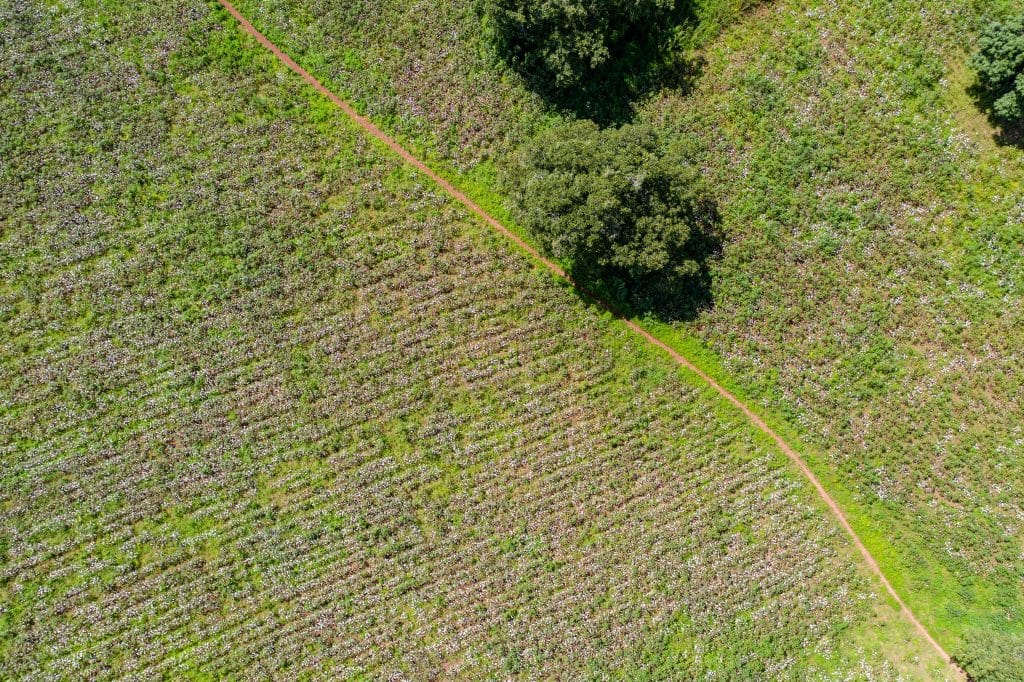

Instead, the market is dominated by simplified, risk-oriented evaluation systems. Underpinning many of these approaches are methodologies premised on the long-standing logic of lifecycle assessment (LCAs).
Championed by the authoritative standards body, ISO, LCAs have been adopted over the years by regulators around the world as a means of determining the environmental credentials of a product or service.
Typically, LCAs depend on an agreed set of easily accessible environmental metrics, overlaid with basic geographical, sector-specific or other relevant variables. LCAs play a valuable role as a broad-brush means of raising red flags or offering a generalised snapshot of a given product at a given time, including identifying hotspots within a product’s manufacturing and use cycle.
But as a tool for assessing positive (or negative) impact over time, or generating insights about why improvements have (or have not) been seen, LCAs reveal next to nothing.
Take the example of fertiliser use in cotton production. An LCA will ask how much chemical fertiliser a farmer uses and grade him or her accordingly. An impact-driven approach will ask the same, but then ask how this compares to the same farmer’s use the year before and to the industry average.
If consumption levels have changed, furthermore, it will interrogate the cause. What role did changing fertiliser prices have to play, for instance? Did participation in sustainability initiatives run by the likes of Better Cotton exert any influence? Is market demand a factor? What is the effect on the farmer’s net income, is he or she better off?
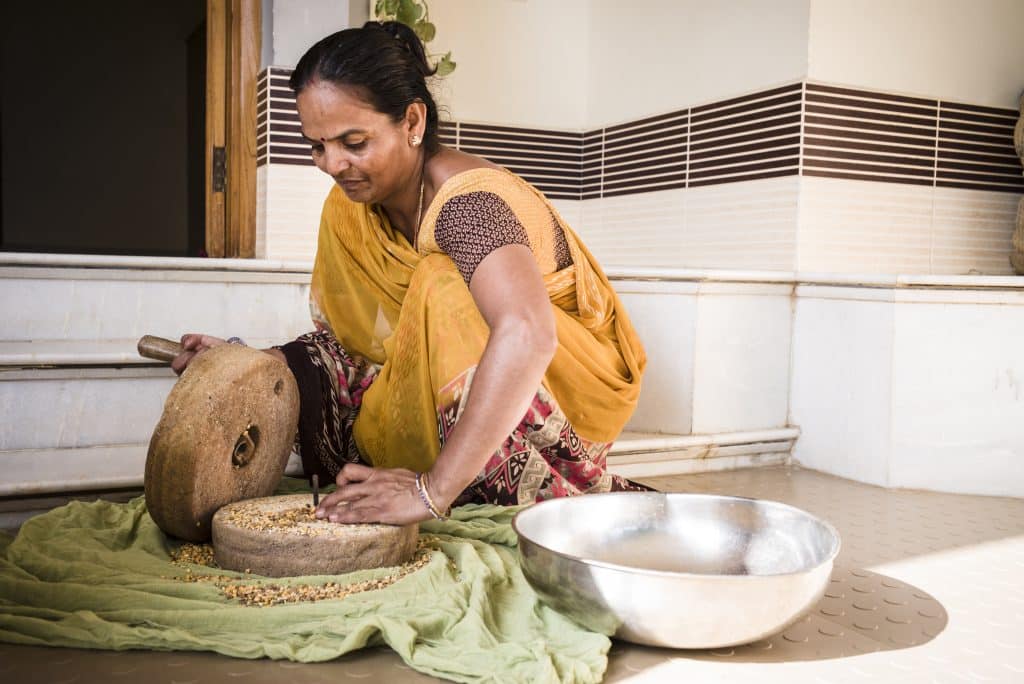

At Better Cotton, we have been working with Wageningen University & Research to apply just such an approach among cotton farmers in two districts in the Indian states of Maharashtra and Telangana. The initial findings reveal a wealth of data around farming techniques, yield levels, and progress on material environmental issues.
For the 2021-22 season, for instance, we now know participating farmers in Maharashtra saw their expenditure on synthetic insecticide reduce by 75% as they switched to bio-insecticides. We also know that the gate price for their cotton was 20% higher than the baselines, with ginners remarking that the fibre quality was higher.
An LCA approach might result in a generic “tick” to the farmers in question, but it would offer up none of this granular detail, nor any evidence that the Better Cotton programme had anything to do with the results achieved.
An impact-based assessment approach opens the door to better decision-making and, in turn, to enhanced environmental performance. This is data as a workhorse for continuous improvement; not, as is still so often the case, data for data’s sake (or, at best, ticking boxes).
We are not there yet. Nor do we pretend that cracking this measurement challenge will be straightforward. But, like it or not, these are the questions that consumers are already asking. And investors and regulators will not be far behind.

